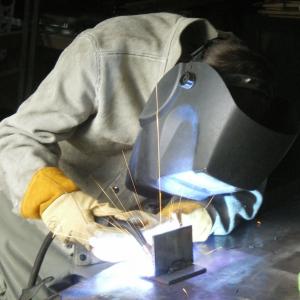
Sophisticated technologies have been created that provide great help to the metal fabrication industry. The techniques used widely vary, depending on the final product to be created.
Here are the following major technologies commonly used by fabricators:
Fibre-optic laser cutting:
This is one of the most advanced laser cutting technologies, wherein a fibre optic laser beam generates energy that is absorbed by the material being cut. This energy is then converted into heat which melts and cuts the material into parts. This fibre-optic laser cutting technology provides a high level of precision at a higher speed. It is perfect to be use in sheet metal fabrication when cutting reflective materials such as titanium, aluminum, copper, brass, and galvanized steel.
CO₂ laser cutting:
This is another type of laser technology that makes use of a gas mixture to produce a laser beam for sheet metal fabricating processes. A wear-free semiconductor excitation module generates the required high voltage in the resonator. Most fabricators believe that it is faster to be used for straight cuts, offers much faster piercing times, and provides a smoother surface finish when cutting thick materials.
Plasma cutting:
Many metal fabrication experts consider this technique very effective in cutting through electrically conductive materials. Plasma is a hot, electrically ionized gas. When the electricity travels from the torch down to the plasma, a sufficient heat is created that melts the material. Meanwhile, the compressed gas and the high-velocity plasma blow the molten parts away. Plasma cutting is a low-cost operation, which is why it’s commonly used for bigger industrial applications.
Water-jet cutting:
This metal fabrication technique utilizes water through a high-pressure pump that cuts into the material with a force as high as 60,000 psi. Fabricators use this technology to cut thicker materials where heat from a laser can interfere with the cut, resulting in poor quality. Water-jets can handle steel, ceramic, as well as a stone.
There are also more conventional metal fabrication techniques that are applied appropriately. For all your metal fabrication and laser cutting needs, make sure to give us a 4 Way Metal a call!







